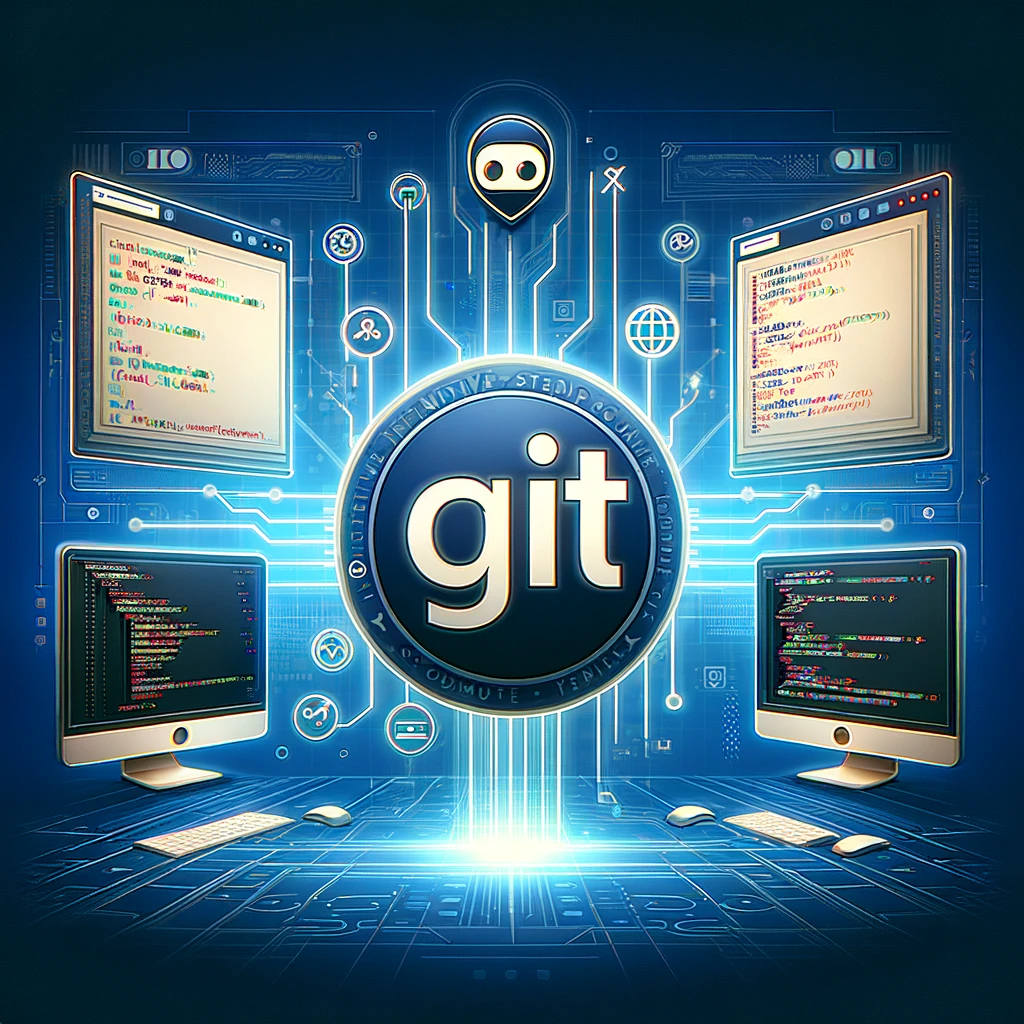If you’re looking to dive into the world of Git and become a pro at source control, “Git Complete: The definitive, step-by-step guide to Git” on Udemy might just be your golden ticket. This course is tailored for anyone, from total beginners to those looking to brush up their skills. As a student who went from zero to hero in Git, I’m excited to share my experience with you.
Instructor Reputation: A Closer Look at Jason Taylor
Instructor Reputation: A Closer Look at Jason Taylor
When it comes to learning Git, the instructor can make or break the experience. In “Git Complete: The definitive, step-by-step guide to Git,” Jason Taylor stands as a towering figure in the realm of software development and education. His impressive 4.4 instructor rating, backed by over 107,000 reviews, isn’t just a number – it’s a testament to his ability to connect with students and impart knowledge effectively.

Jason’s journey in the tech world is nothing short of inspirational. With nearly two decades of experience in programming and software development, he has seen the evolution of the industry firsthand. This depth of experience brings a rich perspective to his teachings, allowing students to not only learn Git but also understand its place in the broader context of software development. His stories from the trenches – from starting as a self-taught programmer to working in startups and large enterprises – resonate with students, offering both practical skills and career insights.
His approach to teaching is hands-on and student-centric. Taylor doesn’t just recite commands or theory; he explains the ‘why’ behind each step, helping students grasp the underlying principles of Git and version control. This depth of explanation is particularly beneficial for those who are new to the field or have had minimal exposure to version control systems.
Moreover, Jason’s credentials are solid. Having developed and sold an award-winning website before finishing college, and then moving on to work in various roles focusing on Java and client-side technologies, his background is diverse and comprehensive. He brings this diversity into his courses, providing a well-rounded learning experience.
The sheer number of students (over 656,000) who have enrolled in his 19 courses speaks volumes about his popularity and the trust he has earned from the learning community. This trust is further cemented by the student reviews, which often highlight his articulate teaching style, the practicality of his courses, and his responsiveness to student queries.
In summary, Jason Taylor’s reputation as an instructor is built on a foundation of real-world experience, a deep understanding of the subject matter, and a commitment to student success. His ability to break down complex concepts into understandable segments makes him an ideal guide for anyone venturing into the world of Git and version control.
Course Structure: An In-Depth Exploration
The structure of “Git Complete: The definitive, step-by-step guide to Git” is a finely-tuned balance of theoretical grounding and practical application. This course isn’t just a series of lectures; it’s a carefully crafted journey through the world of Git, designed to cater to learners at different levels of proficiency.

The course kicks off with an Introduction and Overview, setting the stage for what to expect. This section is crucial for building a foundational understanding of Git and its significance in the world of software development. It also provides a snapshot of the course layout, enabling students to mentally prepare for the learning path ahead.
Following the introduction, the course moves into the Git Installation segment for both Windows and Mac. This inclusivity in terms of operating systems ensures that no student is left behind, regardless of their preferred development environment. The step-by-step guidance through the installation process eliminates any technical barriers that might hinder learners at the outset.
The Quick Start section is particularly noteworthy. Designed as a brief yet intensive hands-on introduction, it provides immediate, actionable experience with Git. By having students sign up for GitHub, create a repository, and engage in basic Git operations, this section reinforces learning through doing – a powerful method for skill acquisition.
As we delve deeper, the course covers Basic Commands in a comprehensive manner. This section is the backbone of the course, walking students through the initiation of a new Git-managed project and the essential commands for effective version control. The inclusion of common file operations and strategies to avoid common mistakes is invaluable for real-world application.
In the Comparisons in Git segment, students learn to navigate the different states in Git, offering a deeper understanding of how Git tracks changes and how to manage different versions of a project. This section is crucial for grasping the full potential of Git as a version control system.
Branching and Merging are addressed with the seriousness they deserve. Starting with straightforward scenarios and gradually introducing more complex situations, this segment prepares students for real-world development environments where branching and merging are daily tasks.
Rebasing, often a challenging concept for beginners, is tackled with clarity and practical examples. This section not only teaches the technical aspects of rebasing but also imparts best practices, helping students avoid common pitfalls.
The Stashing and Tagging sections, including the newly added content, keep the course fresh and relevant. These topics address more nuanced aspects of Git, providing students with a more rounded skill set.
Each section of the course not only includes video lectures but also supplemental materials like attachments, documents, and illustrations. These resources are invaluable for reinforcing learning and providing a reference that students can return to even after completing the course.
In essence, the course structure is a well-thought-out blend of theory and practice, designed to take students on a progressive learning journey. From the basics to the more advanced aspects of Git, the course covers a broad spectrum, ensuring that by the end, students emerge as confident, competent users of this essential tool in modern software development.
Content Quality: A Comprehensive Analysis
The content quality of “Git Complete: The definitive, step-by-step guide to Git” is exceptional, reflecting a deep understanding of both the subject matter and the learning process. This course stands out not only in the breadth and depth of its content but also in the way it’s delivered.

Firstly, the presentations are designed to build a solid theoretical understanding. They are concise yet comprehensive, covering key concepts without overwhelming the learner with excessive information. This balance is crucial for maintaining engagement, especially for beginners. The presentations serve as a foundation, introducing concepts that are later explored in more depth through practical exercises.
The real strength of the course, however, lies in its screencasts. These video tutorials, spanning nearly four hours, are where the theoretical knowledge is put into practice. Watching the instructor navigate Git commands and scenarios in real-time is invaluable. These screencasts mimic a one-on-one teaching experience, making complex operations seem more approachable and understandable. This hands-on approach demystifies Git, making it accessible to learners of all backgrounds.
Additionally, the course is replete with various attachments and document lectures, which provide supplemental information. These resources are not just afterthoughts; they are integral parts of the course, offering detailed illustrations and reference material that enhance the learning experience. This blend of video, text, and graphical content caters to different learning styles, ensuring that every student can find a way to engage with the material effectively.
Another notable aspect of the content quality is the course’s responsiveness to student feedback and evolving technologies. The addition of sections like “Tagging” and updates to existing content demonstrate a commitment to keeping the course current and relevant. This dynamic approach to content creation ensures that students are learning practices and techniques that are applicable in today’s tech landscape.
In summary, the content quality of this course is top-notch, marked by a thoughtful blend of theory and practice. It’s evident that a lot of care and expertise went into creating a learning experience that is comprehensive, engaging, and adaptable to the needs of a diverse student body.
Overall Course Rating: 9/10
After thoroughly engaging with “Git Complete: The definitive, step-by-step guide to Git“, I rate this course a solid 9 out of 10.

The course excels in several key areas:
- Comprehensiveness: Covering everything from basic commands to advanced features like rebasing and stashing, the course leaves no stone unturned. This thorough coverage ensures that learners of all levels can benefit from the course.
- Clarity of Instruction: Jason Taylor’s expertise as an instructor is evident throughout the course. His ability to explain complex concepts in a clear and concise manner makes learning Git less daunting and more accessible.
- Practical Application: The course strongly emphasizes hands-on learning. The screencasts, in particular, are a highlight, offering step-by-step guidance that learners can follow and replicate. This practical approach is crucial for a tool like Git, where real-world application is key to understanding.
- Quality of Materials: The combination of video tutorials, written materials, and supplemental resources creates a rich learning environment. These materials serve not just as a means to deliver content but also as valuable resources for future reference.
- Engagement and Interactivity: The course design encourages active participation. From setting up Git to executing complex commands, the course pushes learners to apply what they’ve learned, reinforcing their skills and building confidence.
- Instructor Support and Community Interaction: The ability to interact with the instructor and other learners adds an extra layer of support, making the learning experience more collaborative and dynamic.
The reason for not rating it a perfect 10 is primarily the need for minor updates, particularly regarding the GitHub UI. While this does not significantly detract from the overall learning experience, it’s an area where the course could improve to maintain its relevance and effectiveness.
Overall, this is an outstanding course for anyone looking to master Git. Its depth, clarity, and practical focus make it a valuable resource for learners at all levels. Whether you’re a complete beginner or an experienced developer looking to refine your Git skills, this course is a worthwhile investment in your professional development.




